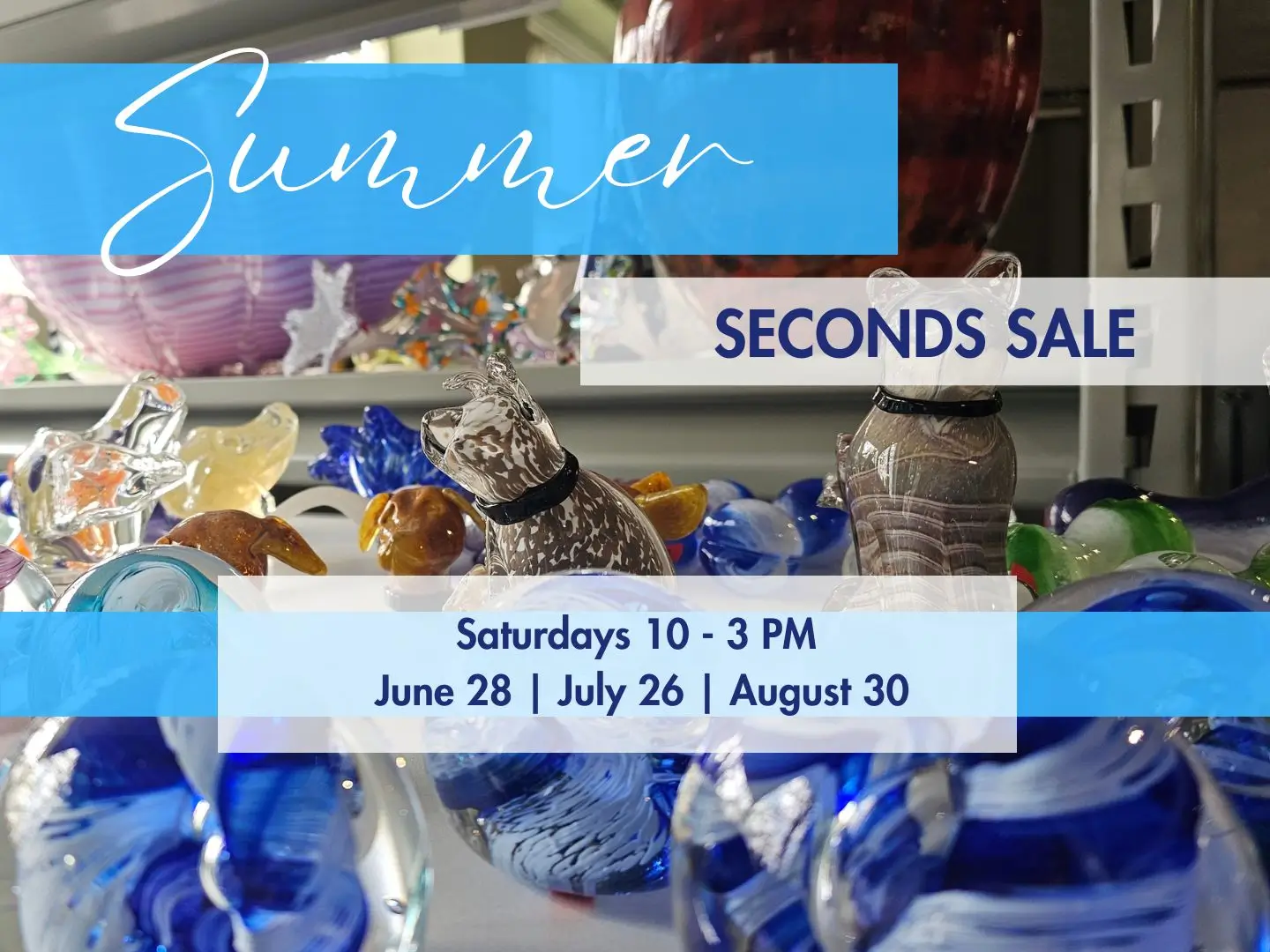
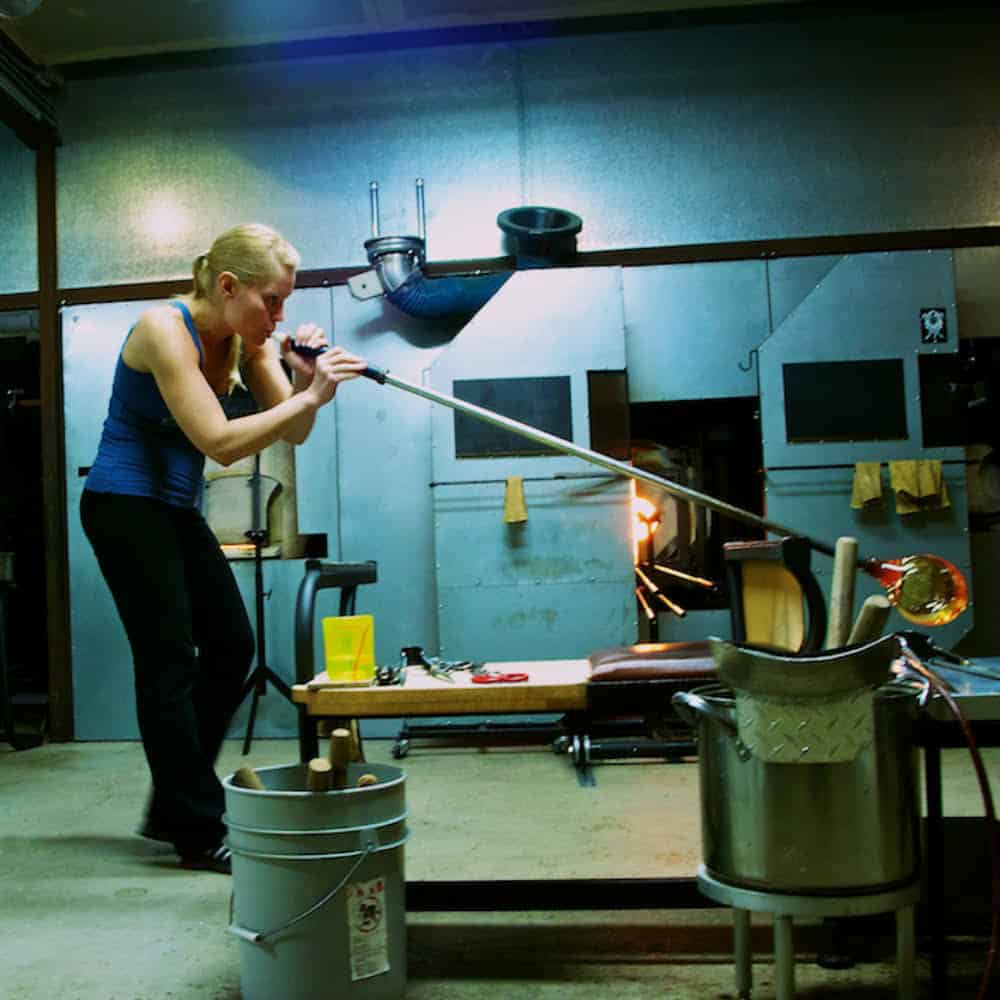
Glassblowing is a fascinating and mysterious art. We get asked a lot of questions so we created this resource to answer your Glassblowing FAQs. It’s divided up by section to help you find what you’re looking for. If you have any other questions, please send us an email and we’ll add them into this list.
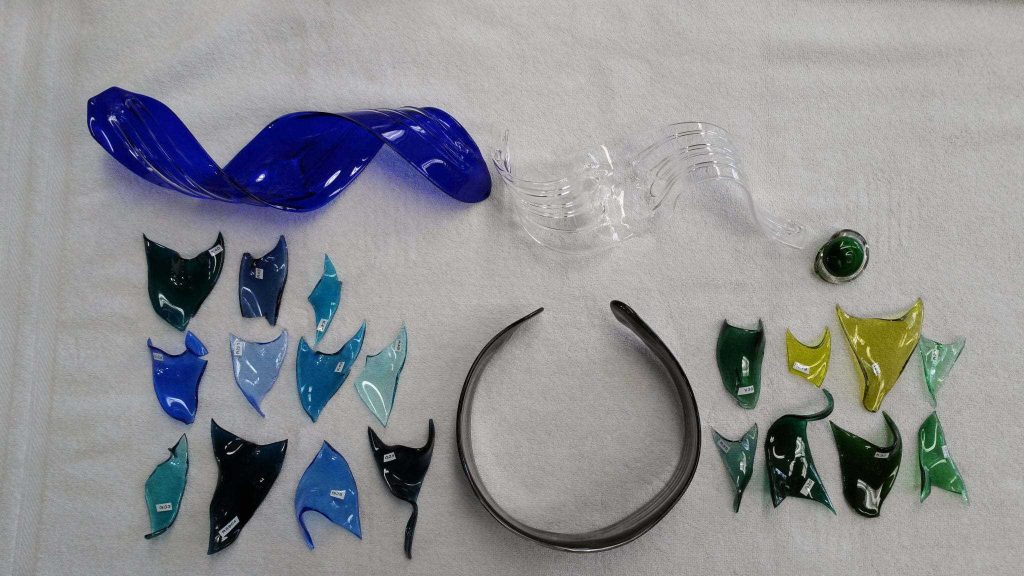
We use Spruce Pine Batch, which is a soda lime glass. It contains soda ash, limestone, feldspar, lithium carbonate, sodium nitrate, zinc oxide, barium carbonate, fluorspar, antimony oxide. These raw materials, called batch, melt down into glass. The process of melting batch is called “charging” and is quite time-consuming. Our furnace requires about 24 hours to charge and cook the batch until it is ready to use.
Our batch melts into glass at 2400F. We work the glass between 2400 and 1500 approximately. Ideally, you work the glass as hot as possible without burning it. Yes! Glass can burn, especially colored glasses, which are very sensitive to temperature.
We recommend you read our blog post on the topic. Many factors go into pricing any art. Glassblowing requires many years of training. Combine this with the time it takes to make a piece. Then add the cost of materials, tools and equipment. Add years of experience and the difficulty of a piece. This is just the short answer though – so definitely check out that blog post!
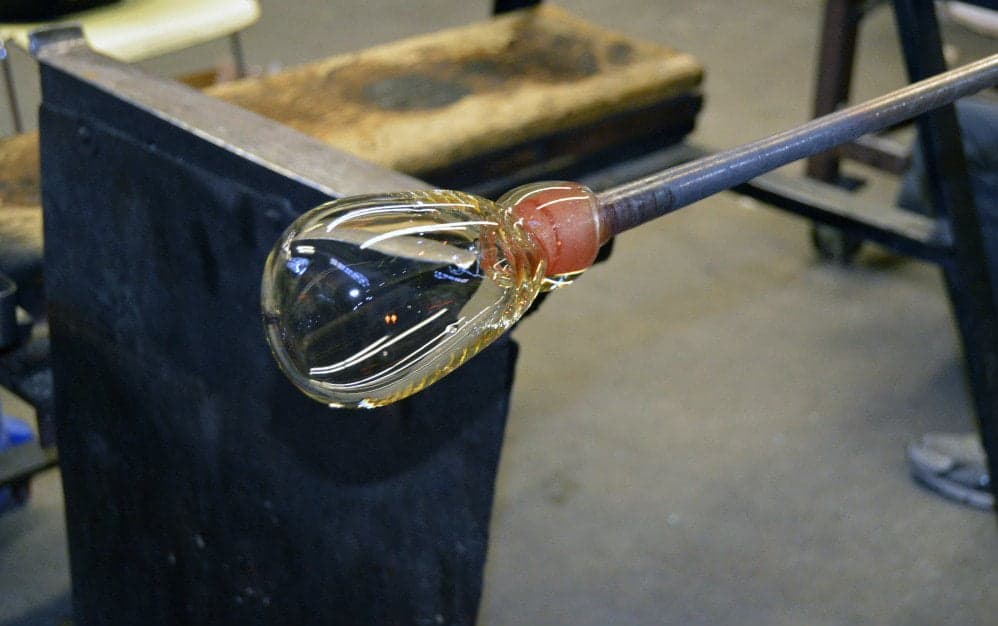
For any questions about glassblowing, we highly recommend our Glassblowing 101 blog post. This gives you an overview of the studio, glassblowing processes, tools and more.
It depends on how hot the glass is. When you blow into the end of the pipe, the glass expands due to the moisture in your breath. The moisture hits the heat and expands the glass. You also blow differently at the beginning of the pieces versus when the glass is almost blown out.
It’s similar to cutting through a thick piece of rubber. The glass squishes down a bit but doesn’t bounce back like rubber. It’s either really hard to cut or really easy dependent on how hot the glass is.
Molten glass is so hot that it looks red or orange, depending on how hot it is. So, while we’re working on a piece, all color is distorted. Clear glass looks orange. Blue or green glass looks red. This is because you’re seeing the temperature rather than the true color. As it cools down, you’ll start to see the real color of the glass. At our workshops we always tell people to rely on the color in the examples displayed when they’re picking on colors. Once it’s heated up, it looks completely different.
The colors that can be added to the basic clear glass come in three forms: color rods which are made of concentrated colored glass and must be pre-heated in the color warmer before applied, frits which are coarsely ground bits of color, and powder which enables the glassblower to layer color or produce fine gradations of color. The artist must carefully choose colors because no all colors are compatible due to the differing temperatures at which they retain or release heat.
Burns happen but not as often as you might think. Once you get burned you are very mindful of your surroundings and it hurts so your sure try hard not to let it happen again. The glass is H-O-T HOT!!!! Just standing by it will make your skin turn red. Over time you’ll build up a bit of a tolerance, but in general, your brain will not let you touch molten glass – animal instinct and your subconscious brain feel the heat and want to stay away.
Practice of course! Knowing where you should be at all times, and having knowledge of all the tools and torches. In glass blowing there are steps to every piece in order for it to be completed in an orderly way. If you follow these steps and know what to expect the chances of getting burned are reduced. We also have protective gear we wear Kevlar protective gear.
Working with hot glass can certainly be dangerous. But it takes years of training and if you’re trained properly, accidents are rare. The safety of our artists is our first priority and everyone in our studio adheres to safety guidelines. If you take a look at other glassblowers, you’ll see that they dress the same and use the same safety equipment.
So why aren’t we covered head to toe in protective gear and instead in shorts and sneakers? First off, its HOT in the studio. Gloves are very bulky and don’t allow you to work closely with the glass. Safety glasses are important and we do wear them most of the time. If you see a picture or video where someone isn’t wearing them, that’s just personal preference. We have the Kevlar gloves mentioned above, sleeves and even a full protective suit but they simply aren’t necessary majority of the time.
So, please don’t be shocked or worried – we’re all staying safe and have years of experience working with glass!
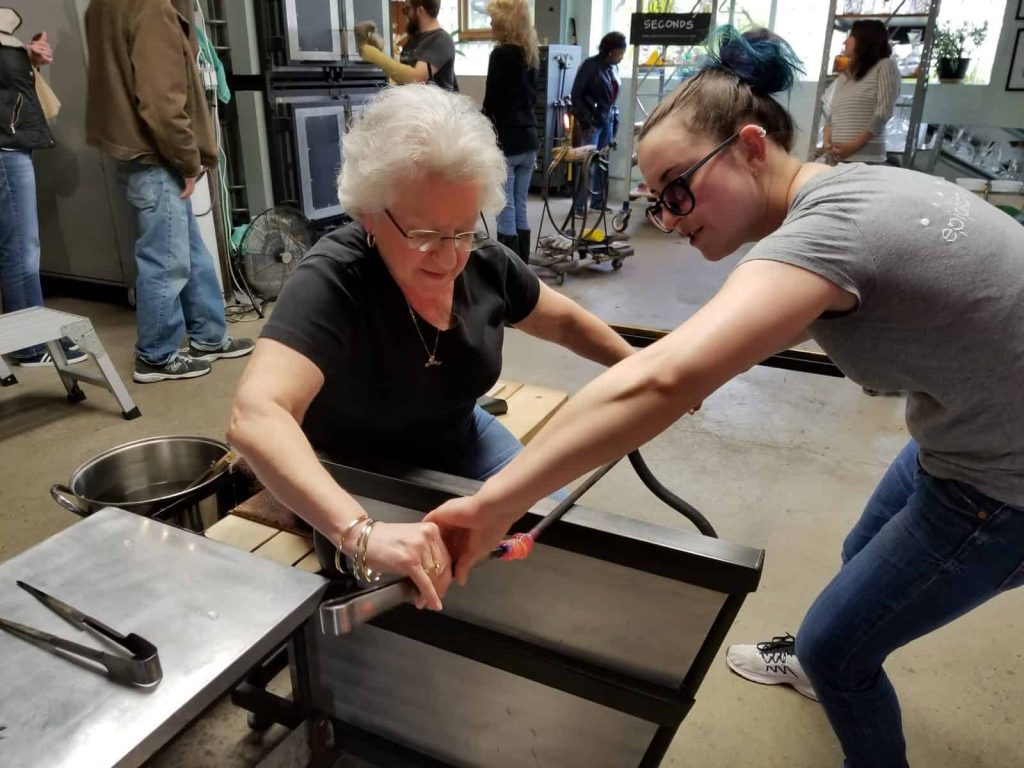
Start off by taking a class to see if you even like it. You could start out with a workshop like the ones we offer (sign up for our newsletter to get first access to registration). This hands-on experience gives you a taste of what it’s like to work with glass. That’s a great way to try out the absolute basics. If you enjoy it, then consider taking a more in depth workshop or beginner’s class.
If you’re interested in taking more in-depth glassblowing classes, we’ve listed a few places that offer classes below. To learn more about how April and our studio artists got into glassblowing, check out this blog post.
Michigan:
College for Creative Studies
Flint Institute of Arts
United States:
Toledo Museum of Arts
Ox-Bow School of Art
Corning Museum of Glass
Pilchuck Glass School
Aside from our workshops, we do not offer long-term classes or teach advanced techniques. In our hands-on workshops we primarily make solid hot-sculpted glass items. We do not teach techniques such as lampworking, fusing, casting or slumping. If you’re interested in learning these other techniques or taking a more in-depth glassblowing class, visit the links above.
We say children ages 6+ can participate in our workshops. However, we ask that parents please use their discretion to know if their child can follow directions.
Yes! Our furnaces run 24/7 but we do try to shut them off in August for maintenance every year. We are open on Thursdays and Saturdays 10 – 3 pm if you want to visit, or on other days by appointment.
The short answer is it depends.
We do make custom pieces. However, there’s also a great deal of custom work we don’t do. If you see something on our website and would like it customized, we’d be happy to talk to you about it. Send us an email here.
If you’re looking for something completely different from what you see on our website, we will likely pass, but it never hurts to ask, so send us an email.
Unfortunately, we cannot make replacement pieces and we do not do repairs.
We don’t make any of the above items. For these pieces specifically, we recommend you search Instagram or Etsy for artists that work with a torch. They’re sometimes called flameworkers or lampworkers and they use borosilicate glass.
Our webstore has a wide variety of artworks. We do not have everything that is available in our studio available on the website, but we would be happy to set up a virtual shopping appointment to show you the many fun artworks in the studio.
Yes, we do ship internationally but the customer pays for shipping, duties, fees, customs and taxes. You can get a shipping quote in our webstore after you add your artworks to cart.
Yes! We have Seconds for sale in our studio. We do not sell them online or in our webstore. Not sure what Seconds are? Read our blog post about them here.
Currently, we only have our Pontiac location. Post pandemic we have closed our Detroit location.
Our art can be found in galleries, gift shops, and department stores across the country. We also work with the online retailer Artful Home.
If you see our work sold by a local retailer, please support them! They bring flavor and value to your community. We value and love our retail partners.
You will NEVER see our work for sale on Amazon.

Open Shopping: Thursday & Saturday 10 am to 3 pm | Curbside: Tuesday to Saturday: 10 am to 3 pm | Other times: By appointment.